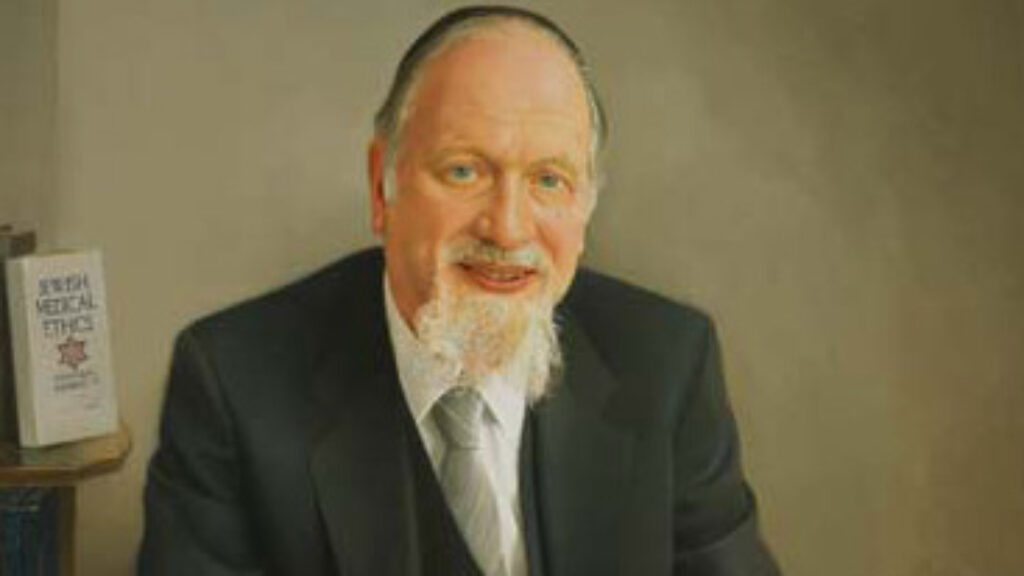Learning as Creation: The Power of Jewish Education
BY ZACHARY KROHN
It is no secret that education is one of the highest values of Judaism, and one can give many reasons for why that is the case. Education is the key to Jewish continuity. It is the key to a flourishing Jewish community and a free society. In the Jewish tradition, Torah learning is considered one of, if not the most important mitzvah. Tractate Shabbat 119b of the Babylonian Talmud goes so far as to declare: “Reish Lakish said in the name of Rabbi Yehuda Nesia: The world only exists because of the breath of schoolchildren.”
Given the supreme importance accorded to education in Judaism, it behooves us to not only understand the origins of this concept, but to analyze its substance. What does a Jewish classroom look like? How should a Jewish teacher teach, and how should a Jewish student learn? Eva Brann, former dean and the longest-serving tutor at St. John’s College, Annapolis, understood the act of teaching as “the controlled public display of delight” and the teacher as “a lover-in-chief prepared not only to be observed in the activity of love but to beckon students into it.” I believe that the writings of Chazal, our Sages of blessed memory, are rich with insights into these questions, and can shed further light on Brann’s vision.
An excellent gateway into this discussion can be found in the Talmud Sanhedrin (99b):
Reish Lakish said: With regard to anyone who teaches Torah to the son of another, the verse ascribes him credit as though he formed that student… Rabbi Elazar says: It is as though he fashioned [asa’an] the words of Torah themselves… Rava says: It is as though he fashioned himself…
One of the first takeaways from this important excerpt is the Talmudic understanding of Torah learning, and by extension, education, as a creative act, first and foremost. Here, Torah is an ever-flowing stream, a giver-of-life each time it is taught anew. Regarding the teacher, the verb used here is asiyah—translated as “forming” or “fashioning.” Clearly, the teacher has an enormous role to play in the development of—something. In the excerpt above, the Gemara records three opinions regarding exactly what the teacher is creating. According to Reish Lakish, the teacher forms the student. According to Rabbi Elazar, the teacher forms the words of Torah. And according to Rava, the teacher forms himself through the very act of teaching.
Reish Lakish’s statement may be the easiest to understand. It is fairly obvious how a student benefits from the transmission of knowledge; indeed, the Binyan Yehoshua (a nineteenth-century Talmudic commentary by Rabbi Joshua Falk of Lissa writes that even a person reading a book could be “created” by its author. But in an ideal scenario, where there is face-to-face interaction between student and teacher, a deep bond between the two can form. In fact, Chazal often describe the teacher-student relationship as that of a father and a son. This would seem to support Brann’s assertion that “the teacher is a lover-in-chief.”
But the opinion of Reish Lakish only forms part of the discussion. It is Rabbi Elazar who challenges us to consider a more compelling aspect of teaching. Rabbi Elazar argues that anyone who teaches Torah to the son of another “is as though he fashioned [asa’an] the words of Torah themselves.” If the teacher is engaged in the act of creating Torah, what role does the student play in this dynamic? Why does this “creation” require students?
To better evaluate Rabbi Elazar’s argument, let us turn to the Mishnah in Pirkei Avot (Ethics of the Fathers) 6:6. The Mishnah presents forty-eight different ways in which a person acquires Torah knowledge; among them, “By attending to the sages, By critical give and take with friends, By fine argumentation with disciples.” The contemporary commentator Rabbi Francis Nataf offers additional insight into this notion of “argumentation”: “The reason is very clear,” he writes. “The little ones sharpen the great ones, because they ask more, and then the scholar has to answer.” Why have students? Because they deepen one’s understanding of the material itself.
Given all that we have uncovered from Reish Lakish and Rabbi Elazar’s statements, one question remains: What does Rava’s statement add? What does it mean that the teacher “fashions himself”? Here we arrive at the Rambam, Maimonides, arguably one of the greatest Torah scholars in Jewish history. The Rambam writes in his Laws of Torah Learning 5:12:
Just as students are obligated to honor their teacher, a teacher is obligated to honor his students and encourage them. Our Sages declared: “The honor of your students should be as dear to you as your own.” A teacher should take care of his students and love them, because they are like sons who bring him pleasure.
It would seem from the Rambam’s statement that the “pleasure” brought by students is the primary reason for the teacher’s obligation to love them. One might suggest that pleasure from a student’s success should not be the only reason for a teacher to love a student—even if a student is struggling, a teacher must love him. But the Rambam felt that Rava’s statement, of the teacher’s formation, and not Reish Lakish’s, was the primary impetus for the teacher to love his students. This speaks to the preciousness of the student in the Jewish classroom; it is not the teacher’s role as creator, but the student’s role as such, that substantiates this loving relationship.
Let us now return to Eva Brann and her assertion that “teaching is above all the controlled public display of delight.” As we’ve seen from the rabbinic sources, this delight is manifold. In one sense, the delight is a product of the mutual bond between the teacher and student, bound by the unbreakable glue of knowledge, itself cause for jubilation. In another sense, the deeper understanding of the material achieved through the students’ inquisitiveness inspires profound contentment in the teacher.
Indeed, at the fundamental level, the Talmud is presenting us not with two or three parallel understandings of education but one multi-layered image of the Jewish classroom. In this classroom there is affection. In this classroom there is freedom of thought. And perhaps most importantly of all, in this classroom there are questions.
All the parties who have the privilege to enter this classroom—the students, the teacher, and the Torah in particular—emerge transformed. Yes, in any classroom setting, the primary burden is on the teacher, the “lover-in-chief” to be “prepared not only to be observed in the activity of love but to beckon students into it.” But as we have seen from our Sages, the importance of each individual learner cannot be overstated. So, no matter where in the room we happen to be sitting, we all have a crucial role to play in creating this Jewish classroom, thereby allowing ourselves to be created.
Suggested Reading

“If Only My People…” Zionism in My Life
BY GIDEON ROSEN “And I will give you as a light for the nations so My salvation will reach the edge of the earth” (Isaiah 49:6) In his book, “If…

Beseeching
BY SAMUEL FIELDS We’re crying, But He’s not listening The days pass by The months go on But still no response How much are we expected to do We are…

Maintaining Jewish Unity Without Uniformity
BY ELIE DOUER In the months before the October 7 attack, political tensions in Israel were at an unprecedented high, with intense polarization over the proposed judicial reforms. Studies show…

The Dichotomy of Modern Culture: A Nietzschean Perspective on Aesthetic Oscillations
BY RACHAEL KOPYLOV Art permeates every aspect of our lives, from visual expression to music and fashion, it shapes and evolves alongside us as it reflects the human experience. The…